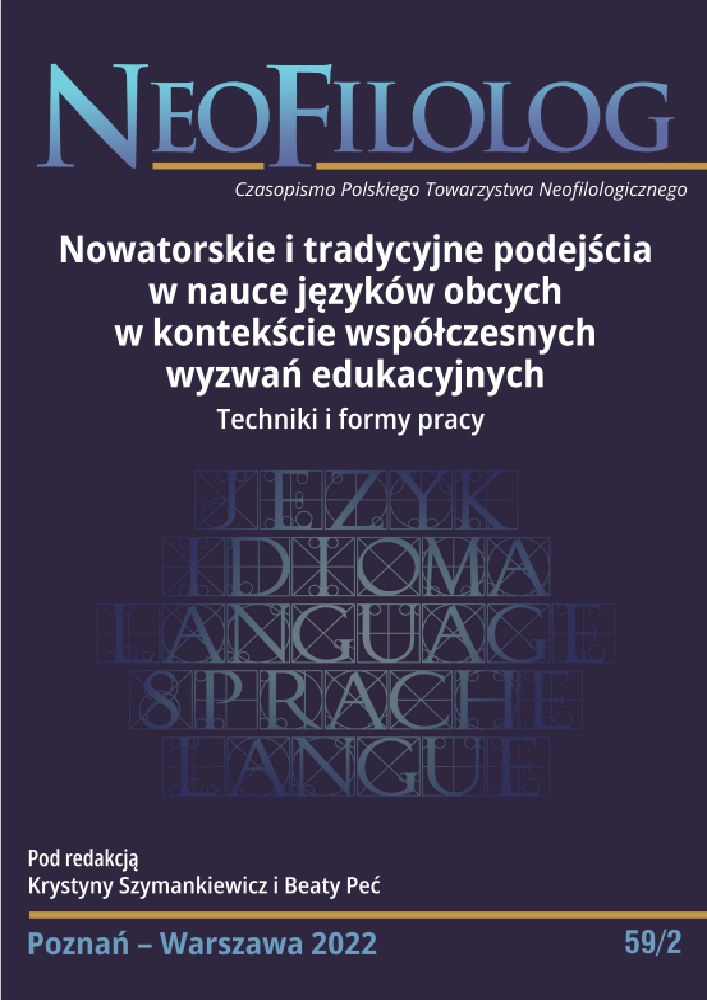Abstrakt
The global pandemic has forced changes in education. About 1.5 billion students worldwide have experienced school closures. The aim of the article is to present the results of the survey on teaching during coronavirus in secondary schools where the research group consisted of students and teachers. For many students and teachers, the new way of learning and teaching has been a great challenge and has caused many difficulties and has exposed deficiencies in education systems. During the research, the focus is on students, teachers, school principals and parents who had to find themselves in a new and tricky situation at school, which was distance learning. The research addresses aspects related to the situation, well-being and figure of students and teachers during the new virtual reality, methods of teachers' work in a virtual school, as well as the importance of principals and parents as a support for students and teachers during a global pandemic.
Bibliografia
Brash B., Pfeil, A. (2017), DLL 09: Unterrichten mit digitalen Medien. Stuttgart: Ernst Klett Verlag.
Chałubińska-Jentkiewicz, K. (2019), Rozwój nowoczesnych technologii w kontekście procesu stanowienia prawa na przykładzie strategii AI. (w:) „TEKA Komisji Prawniczej PAN Oddział w Lublinie“, t. 12, nr 2, s. 53–71.
Główny Urząd Statystyczny (2021), Oświata i wychowanie w roku szkolnym 2020/2021. Główny Urząd Statystyczny / Obszary tematyczne / Edukacja / Edukacja / Oświata i wychowanie w roku szkolnym 2019/2020.
Heba A. (2009), Nauczanie na odległość – wczoraj i dziś. „Nauczyciel i Szkoła“, t. 3–4, s. 145–152.
Juszczyk S. (2002), Edukacja na odległość. Kodyfikacja pojęć, reguł i procesów. Toruń: Multimedialna Biblioteka Pedagogiczna, Wydawnictwo Adam Marszałek.
Juszczyk S. (2021), Edukacja na odległość, (w:) Siemieniecki B. (red.), Pedagogika medialna. Warszawa: Wydawnictwo Naukowe PWN, s. 251–285.
Kmiecik G. (2021), E-wykluczenie - zagrożenie dla współczesnej edukacji. „Pedagogika Przedszkolna i Wczesnoszkolna“, t. 9, nr 2(18)/2021, s. 97–107. https://doi.org/10.4467/23537159PPW.21.021.15181
Kopciał P. (2013), Analiza metod e-learningowych stosowanych w kształceniu osób dorosłych. „Zeszyty Naukowe Warszawskiej Wyższej Szkoły Informatyki“, nr 9/2013, s. 79–99.
Szabłowski S. (2009), E-learning dla nauczycieli. Rzeszów: Wydawnictwo Oświatowe FOSZE.
Szadzińska E. (2021), Wykluczenie cyfrowe podczas pandemii Dostęp oraz korzystanie z internetu i komputera w wybranych grupach społecznych. Federacja Konsumentów.
Zubik M. (2008), Nowe technologie jako wyzwanie i zagrożenie dla prawa, statusu jednostek i państwa, (w:) Girdwoyń P. (red.), Prawo wobec nowoczesnych technologii. Warszawa: Liber, s. 37–50.
OECD (2001), Understanding the Digital Divide. Paris: OECD. https://www.oecd.org/digital/ieconomy/1888451.pdf#:~:text=As%20used%20here%2C%20the%20term%20%E2%80%9Cdigital%20divide%E2%80%9D%20refers,the%20Internet%20for%20a%20wide%20variety%20of%20activities. (Zugang online: 01.11.2022).
Licencja
Prawa autorskie (c) 2022 Filip Myszka

Utwór dostępny jest na licencji Creative Commons Uznanie autorstwa – Bez utworów zależnych 4.0 Międzynarodowe.
Przedstawiany utwór (artykuł) upubliczniany jest na podstawie umowy z autorem i na licencji Creative Commons Attribution-NoDerivatives 4.0 International (CC BY-ND 4.0).
Użytkownicy mają obowiązek podania wraz z rozpowszechnionym utworem, informacji o autorstwie, tytule, źródle (odnośniki do oryginalnego utworu, DOI) oraz samej licencji;
- bez tworzenia utworów zależnych,
- utwór musi być zachowany w oryginalnej postaci.
Uniwersytet im. Adama Mickiewicza w Poznaniu zachowuje prawo do czasopisma jako całości (układ, forma graficzna, tytuł, projekt okładki, logo itp.).


